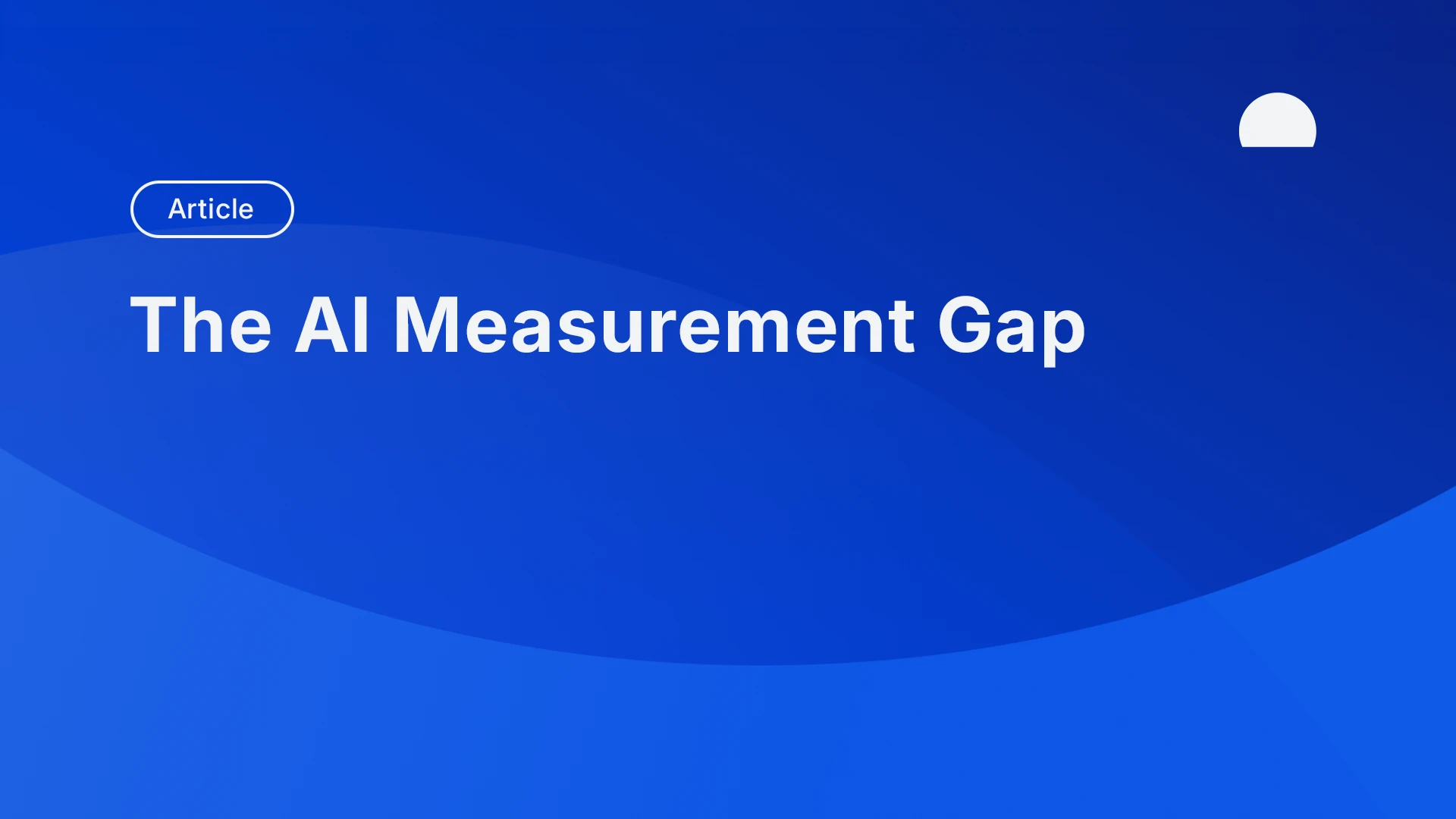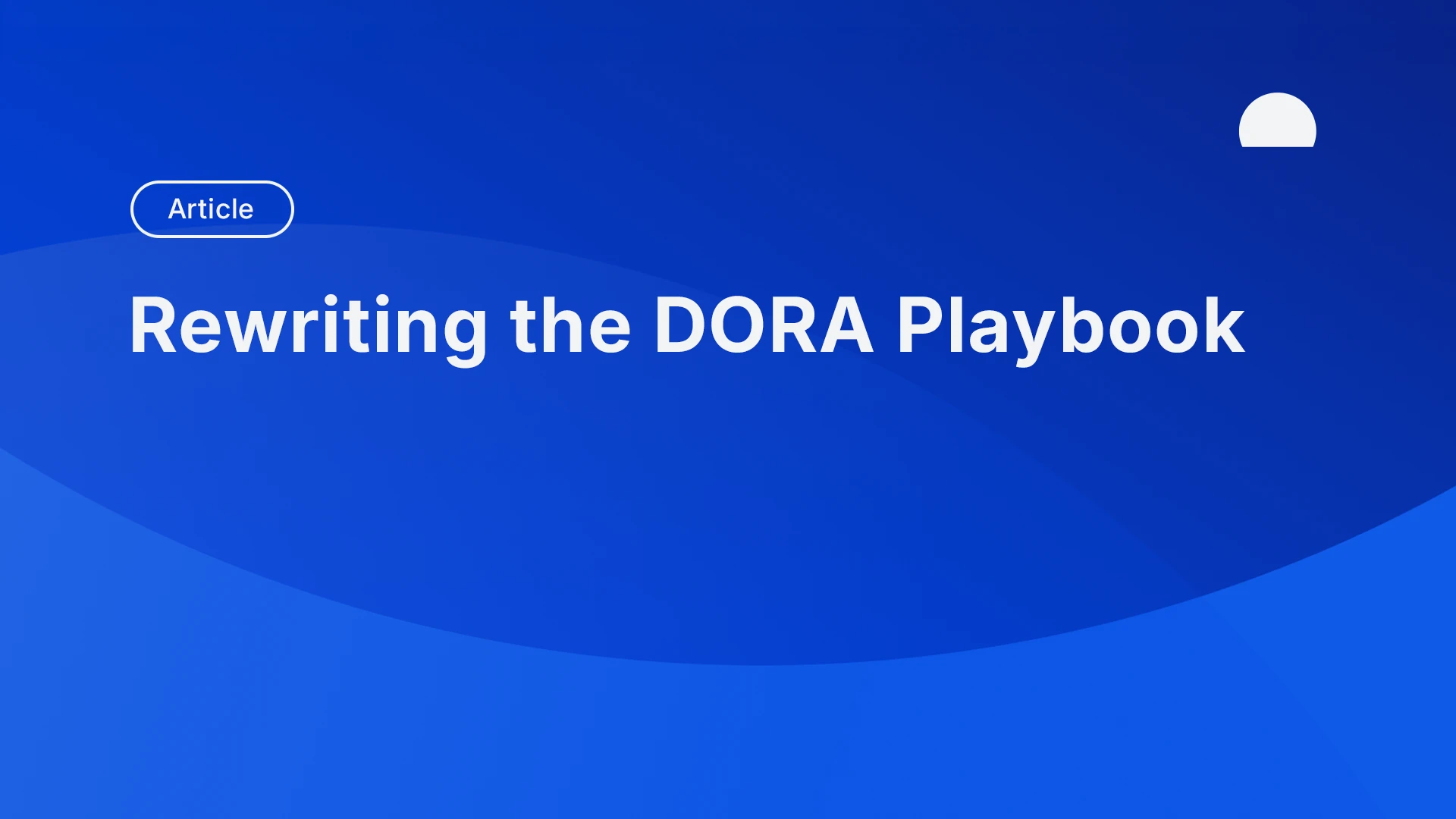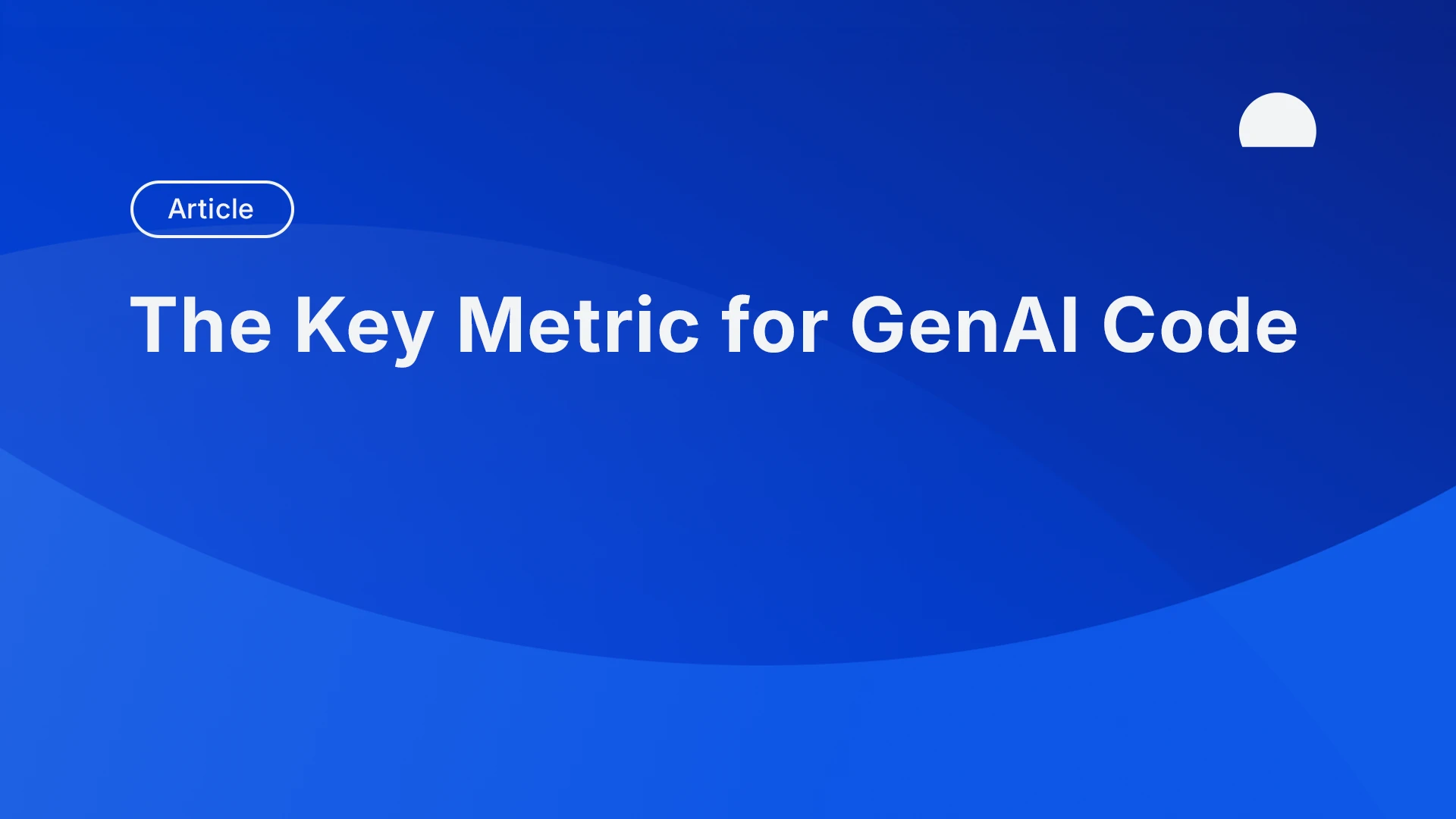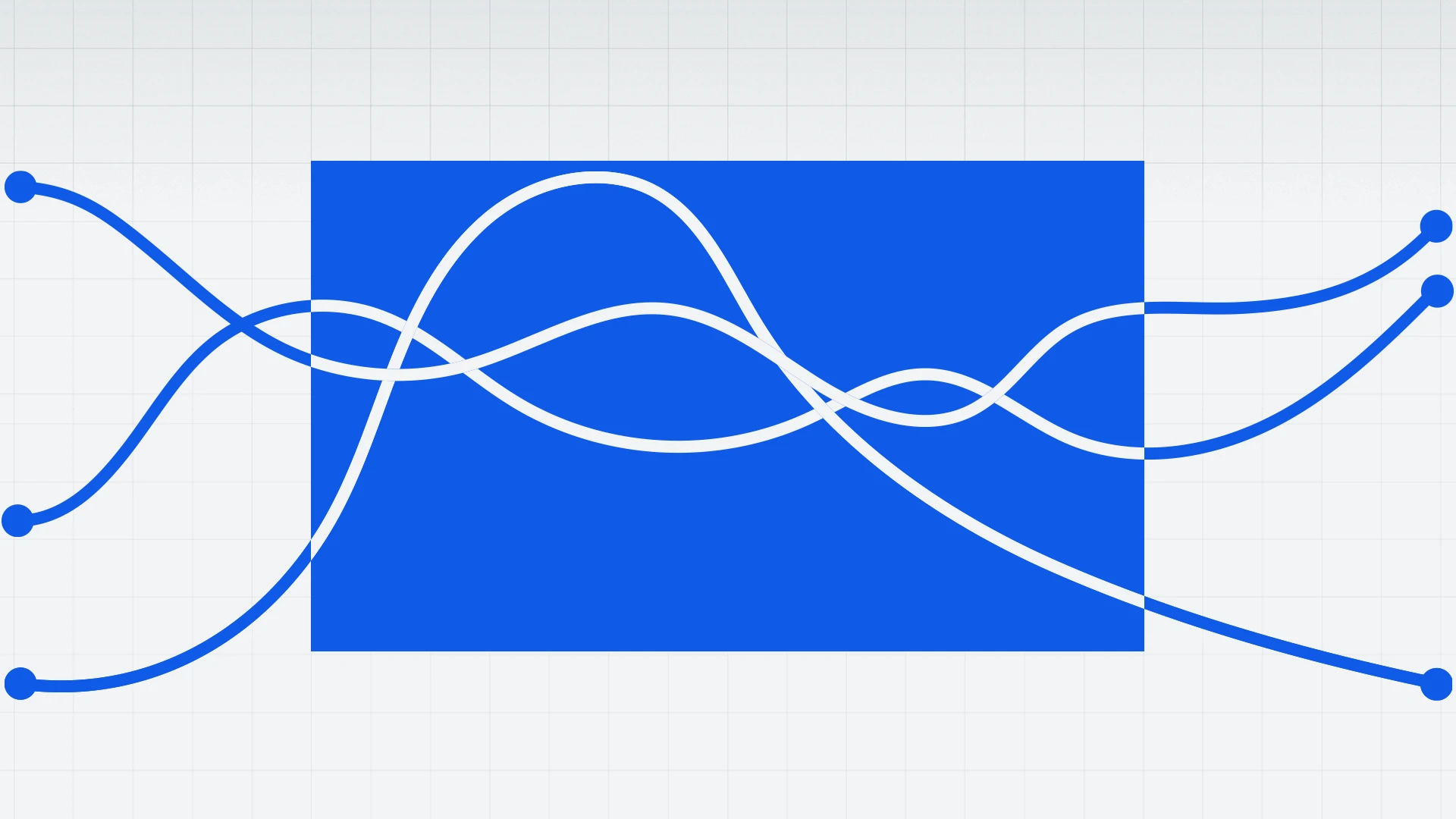DORA Demystified – How Maintainability Forecasts Change Failure Rates
BlueOptima's new research reveals maintainability as the key to forecasting change failure rates, transforming your approach to software stability.

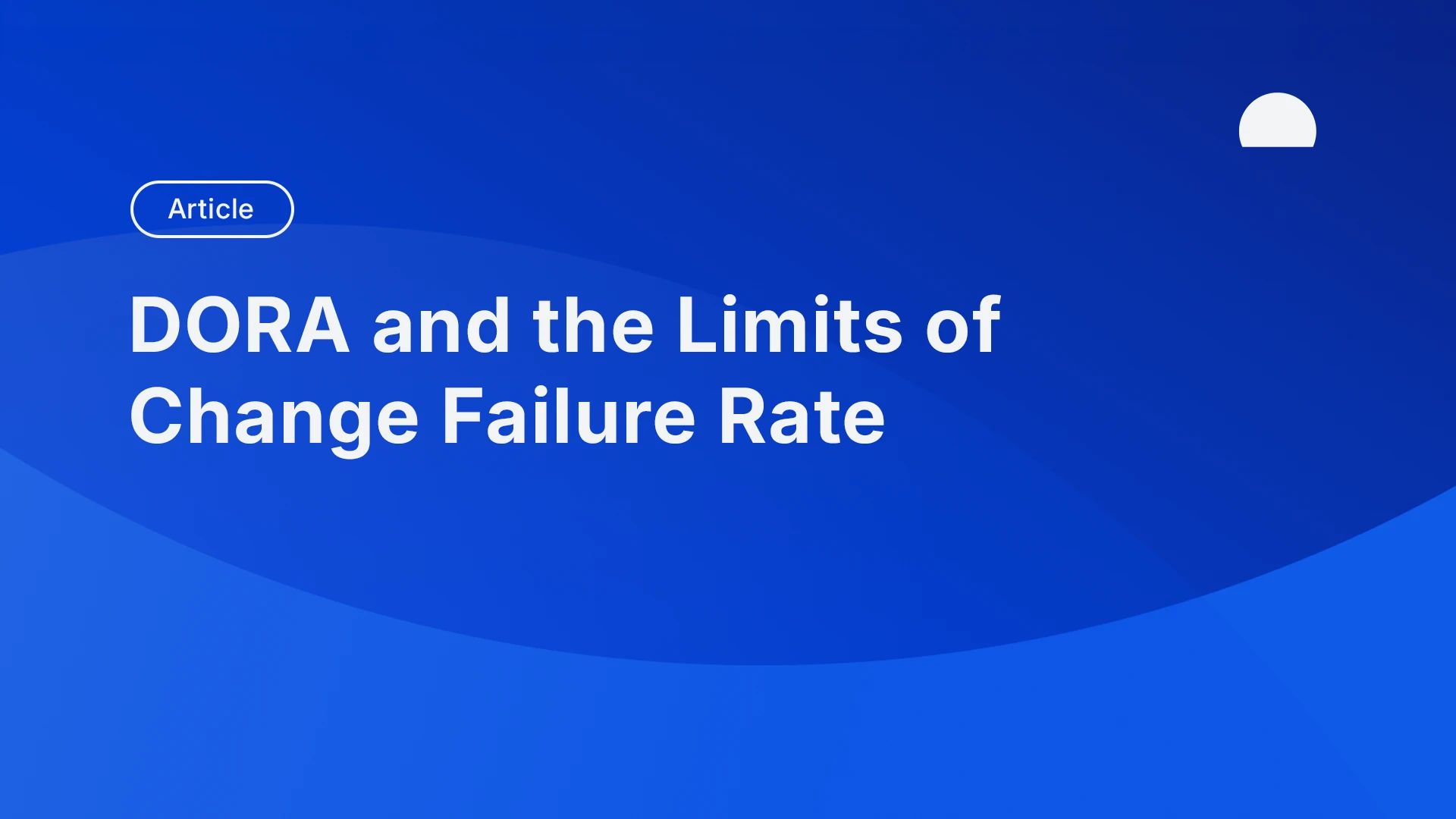
For many engineering leaders, DORA metrics have become the north star of DevOps performance. Among them, the Change Failure Rate (CFR) metric is especially valued for its promise to measure system stability. But what if CFR tells us only half the story?
As more organisations adopt these metrics to guide decisions and shape delivery practices, one fact is becoming increasingly clear: CFR is reactive. It only reflects problems after a failure has occurred. That is not just a limitation. It is a potential risk. The key to robust, confident software delivery lies not only in measuring failure but in forecasting it before it happens.
The Limitations of DORA Metrics
Change Failure Rate (CFR) measures the frequency with which errors or problems arise for customers following a deployment to production. It measures the proportion of deployments that cause incidents, but only after they’ve occurred. This makes CFR a useful performance metric, but also a reactive one. It offers a retrospective view, not a predictive one.
In dynamic enterprise environments, where even minor outages can have significant operational consequences, waiting until production fails to identify risk is a precarious strategy. Knowing that a problem has occurred is not the same as being able to prevent it.
This is the fundamental challenge addressed by BlueOptima’s new research report, Shifting Left on DORA Change Failure Rate: Leading with Maintainability, Not Just Measuring Failure. Drawing on data from over 2,000 code repositories across 26 global enterprises, the report presents compelling evidence that software maintainability is a powerful leading indicator of change failure.
Measuring Maintainability
Maintainability, as defined by BlueOptima, refers to how easily code can be understood, modified, and extended. It is assessed using a set of static analysis metrics that evaluate aspects such as code complexity, modularity, coupling, and the presence of structural anti-patterns. These insights are not surface-level. Instead, they reflect the underlying architecture and long-term health of a software system.
Instead of relying solely on lagging indicators like CFR, the report proposes a forward-looking approach. By systematically measuring maintainability, engineering leaders gain visibility into potential stability risks before they surface in production. This marks a strategic shift from reacting to incidents to actively forecasting and preventing them.
A Shift Towards Predictive Metrics
What makes a software system stable? Traditionally, the answer has been drawn from post-deployment outcomes. However, BlueOptima’s findings suggest that true stability is rooted earlier in the life cycle: in the structure and quality of the code itself.
Rather than relying on outcomes to infer software health, maintainability metrics offer direct insight into the conditions that precede failure. This allows teams to understand not just when something went wrong, but why it was likely to go wrong in the first place. It reframes the conversation around reliability from symptoms to causes.
This shift also redefines the role of engineering leaders. Instead of focusing solely on performance post-release, they now have the tools to act upstream before an incident hits production. Maintainability becomes a strategic input, not just an output metric.
Crucially, this is not about measuring individual developer behaviour. The insights from BlueOptima’s maintainability analytics are system-level, revealing how entire codebases are evolving, where risks are accumulating, and which areas require attention to avoid downstream instability.
The Link Between Maintainability and CFR
The research demonstrates a clear and consistent pattern: repositories with poor maintainability, characterised by structural anti-patterns like god classes and excessive file complexity, have markedly higher Change Failure Rates. These systems fail more and tend to release less frequently, undermining both stability and agility.
In contrast, codebases with strong maintainability profiles see failure rates remain low, often below 10 per cent. These systems are more resilient and better equipped to support continuous delivery. The relationship is causal, not incidental. When code is clean, modular, and well-understood, teams can change it with confidence.
One of the more nuanced findings is the impact of proactive rework. Refactoring, especially in high-risk or complex files, is crucial in reducing deployment failures. Developer engagement with problematic areas of code contributes directly to system robustness, yet this type of preventative effort is entirely invisible to DORA metrics.
Maintainability as a Forecasting Tool
Beyond highlighting code quality issues, BlueOptima’s maintainability metric helps anticipate where failures are likely to occur. The study found that this metric could reliably identify high-risk deployments before they reached production.
For engineering leaders, this means earlier visibility into potential problems and the ability to act before users are affected. It enables teams to tackle technical debt proactively, refactor with purpose, and reduce the likelihood of deployment failures as part of everyday development.
Maintainability is about more than just clean code. It is a core driver of delivery confidence and long-term software stability.
What This Means for Executives
For technology leaders, the takeaway is clear: traditional DORA metrics offer valuable insights, but they often arrive too late. To truly manage risk and improve delivery performance, you need visibility into the factors that lead to failure, not just the symptoms after the fact.
That visibility starts with maintainability. By embedding structural code analysis into your development process, your teams can detect fragility early, target technical debt effectively, and deliver with greater confidence and consistency.
This is more than an upgrade to how you measure performance. It is a shift in mindset from reacting to issues to preventing them entirely.
To explore the full findings and see how your organisation can take a more predictive approach to software stability, read the full report: Shifting Left on DORA Change Failure Rate: Leading with Maintainability, Not Just Measuring Failure





